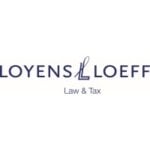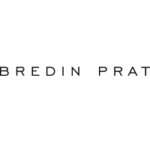-
What proportion of transactions have involved a financial sponsor as a buyer or seller in the jurisdiction over the last 24 months?
For auction processes of privately held assets it is now common for sponsors to form the majority of potential bidders, with trade buyers the exception. Data from Mergermarket suggests that of all UK transactions completed in the last 24 months, 28% were either a buyout or an exit involving a financial sponsor, rising to 46% if bolt-on transactions are included.
-
What are the main differences in M&A transaction terms between acquiring a business from a trade seller and financial sponsor backed company in your jurisdiction?
Sponsors’ approach is primarily driven by the desire to achieve a clean break from the portfolio company (Portco) on exit and return proceeds to limited partners (LPs) at the earliest opportunity. As a result they typically do not give warranties beyond standard title and capacity warranties. Coverage for business warranties needs to be obtained elsewhere. This has been one driver behind the rapid growth of W&I insurance in the UK market in the last decade. Locked box pricing mechanisms are much more common on deals with private equity (PE) sellers (as discussed below) partly due to the lack of requirement for post-completion adjustments compared to a completion accounts deal. Sponsors are extremely reluctant to agree to specific indemnities for known risks affecting the business, deferred consideration or escrow arrangements. It is therefore common for buyers to be pushed to price-in the value of specific risk items or for the sellers to seek to resolve issues pre-completion. Sponsors will also strongly resist giving any restrictive covenants such as non-competes, particularly large multi-strategy sponsors who cannot restrict their whole group or portfolio.
-
On an acquisition of shares, what is the process for effecting the transfer of the shares and are transfer taxes payable?
For certificated shares, normally shares in an unquoted company, the seller executes a stock transfer form (STF) at completion. The execution of STF(s) is a key completion deliverable under the share purchase agreement (SPA) between the seller(s) and the buyer(s).
Stamp duty is payable at 0.5% of the consideration (subject to a de minimis of £5 but thereafter rounded up to the nearest £5 for each STF). From completion, the buyer becomes the beneficial owner of the shares, but cannot be registered in the company’s register of members until stamp duty has been duly paid on the share transfer(s), usually by the buyer. Consequently, sellers typically deliver a power of attorney over the shares alongside the STF, allowing the buyer to operate as the registered holder(s) of the shares (including by exercising voting rights and receiving any dividends) pending stamping of the STF(s).
For uncertificated shares, normally shares in a quoted company, shares are typically transferred via electronic registers with no requirement for a signed instrument. Such transfers are usually subject to stamp duty reserve tax (SDRT) at 0.5% of the purchase price, payable by the buyer. Where an STF has been executed and stamp duty paid in respect of a transfer, the SDRT liability is ‘franked’ (and so extinguished).
-
How do financial sponsors provide comfort to sellers where the purchasing entity is a special purpose vehicle?
Where there is a gap between signing and completion, sponsors typically provide an equity commitment letter in which their fund(s) commits to providing the equity portion of the cash consideration at completion. The commitment is typically given to the sponsor’s own Bidco but enforceable by the seller(s) (either directly or via a third-party rights provision) and may include a commitment to fund any damages payable by Bidco under the transaction documents. Where the transaction is partly debt-financed, sponsors may also provide a debt commitment letter from the lender and/or other documents such as a signed facility agreement.
Where signing and completion are simultaneous, commitment letters are typically unnecessary but may still be used for post-completion payments, such as contingent or deferred consideration.
-
How prevalent is the use of locked box pricing mechanisms in your jurisdiction and in what circumstances are these ordinarily seen?
The locked box mechanism allows price certainty, as parties can calculate in advance the exact purchase price (adjusting for the impact of any ‘equity ticker’, an amount akin to an interest rate sometimes applied to the equity value in a locked box transaction to reflect expected earnings from the locked box date to completion). It avoids the need to determine any post-completion adjustment, which can be contentious and delay distribution of funds to selling sponsor LPs.
Completion accounts are however used in certain circumstances, predominately:
- where the target is a seasonal business;
- development platforms (particularly real assets in in energy & infrastructure), or real estate transactions;
- carve-out transactions where impractical to prepare standalone locked box accounts of the target business; or
- bilateral processes where the buyer has leverage to dictate the pricing mechanism.
-
What are the typical methods and constructs of how risk is allocated between a buyer and seller?
As noted above, locked box mechanisms are the most common mechanism used on UK PE transactions, with completion accounts mechanisms used only in exceptional cases. Under a locked box mechanism the buyer will price the business as at a historic accounts date (the ‘locked box date’) on a cash-free debt-free basis assuming a normalised level of working capital. The seller(s) will give a leakage covenant, indemnifying the buyer for value transferred from the target to the seller and its related parties between the locked box date and completion, with certain ‘permitted leakage’ exceptions, including ordinary course salaries or one-off transaction fees payable by the target (though the latter will usually be netted off the purchase price in the ‘enterprise value (EV) to equity bridge’). The buyer at completion takes on the risk of the target’s performance from the locked box date forwards.
Typically the seller(s) gives warranties to the buyer(s) but not representations, as under English law representations can give rise to a right of rescission and a potentially broader assessment of damages. Typical categories of warranties are standard title and capacity warranties, business warranties and tax warranties. As discussed above, W&I insurance is often used to give buyers sufficient coverage for the warranties.
Sponsor sellers are very reluctant to give specific indemnities for known risks, being focused on returning proceeds to LPs and achieving a clean break. Buyers are often pushed to price-in the value of specific identified risks. Sellers also often seek to resolve issues pre-completion.
-
How prevalent is the use of W&I insurance in your transactions?
Buy-side W&I insurance is a standard feature of UK PE transactions. Sellers often commence the process of obtaining W&I insurance in advance of auction processes, later allowing a preferred bidder (or small pool of bidders) access to the broker and underwriters to finalise the policy.
As noted above, sellers typically don’t give warranties beyond customary title and capacity warranties. Buyers therefore need to obtain coverage for business and tax warranties elsewhere. Management shareholders typically give business and tax warranties to a buyer, but are unlikely to receive sufficient cash proceeds from the transaction to give the buyer adequate coverage, and a PE buyer is unlikely to wish to bring a claim against the management team post-completion. The sellers, or management, may also give a tax covenant protecting the buyer for historic tax liabilities of the target, also covered by W&I insurance (subject to customary tax exclusions).
W&I therefore offers meaningful coverage against a highly credit-rated institution while mitigating internal disputes post-completion.
-
How active have financial sponsors been in acquiring publicly listed companies?
Data from What’s Market suggests that PE sponsors have been behind 30% of firm public takeover offers in 2024. Public M&A activity for 2024 has overall been down from 2023 although the number of high-value transactions has in fact increased, with PE sponsors behind a number of firm offers at valuations of over £1bn.
-
Outside of anti-trust and heavily regulated sectors, are there any foreign investment controls or other governmental consents which are typically required to be made by financial sponsors?
Mandatory notification obligations apply to qualifying acquisitions of control of companies that carry out specified activities in the UK in 17 specified sensitive sectors.
Where the mandatory notification obligation is triggered, the transaction cannot be completed prior to clearance. A qualifying acquisition of control includes:
- increasing a shareholding or voting rights held in an entity engaged in specified activities from:
- 25% or less to more than 25%;
- 50% or less to more than 50%;
- less than 75% to 75% or more; or
- acquiring voting rights in such an entity enabling the acquirer to secure or prevent the passage of any class of resolution governing the entity’s affairs.
However, the government has wide powers to call-in transactions for review in any sector, provided that at least ‘material influence’ is acquired (which may be found in respect of a shareholding as low as 5-10%). This power also extends to asset acquisitions. Voluntary notification may therefore be advisable where the requisite degree of control is being acquired and it is anticipated that potential national security concerns may arise.
The application of the National Security and Investment Act 2021 (NSIA) to private capital varies depending on the type of investment vehicle/structure used. LPs should not generally expect to have to make individual notifications in respect of fully discretionary investments made by a fund manager on their behalf. However, governance and information rights for LPs can have significant implications for the execution risk profile.
- increasing a shareholding or voting rights held in an entity engaged in specified activities from:
-
How is the risk of merger clearance normally dealt with where a financial sponsor is the acquirer?
The UK merger control regime is voluntary and there is no obligation to notify a transaction to the Competition and Markets Authority (CMA) or to obtain clearance prior to completion. However, a large number of transactions are notified in the interest of legal certainty (and often made conditional on clearance being received). The CMA can and does open investigations into transactions on its own initiative, whether or not notified. Where the parties opt to notify a transaction to the CMA the obligation will be on the buyer to make the relevant filings.
Where CMA approval is a condition, the parties agree a standard of efforts that the buyer is obliged to make in order to obtain the approval. Sellers typically request that buyers be held to a ‘hell or high water’ standard, requiring that they will take all steps necessary to obtain the approval, including making divestments. Buyers are unlikely to accept the hell or high water standard where not limited to the target group or otherwise subject to ‘burdensome condition’ type carve-outs on the actions they are required to take.
-
Have you seen an increase in (A) the number of minority investments undertaken by financial sponsors and are they typically structured as equity investments with certain minority protections or as debt-like investments with rights to participate in the equity upside; and (B) ‘continuation fund’ transactions where a financial sponsor divests one or more portfolio companies to funds managed by the same sponsor?
Minority investments have been a longstanding feature of the market in large cap or infrastructure transactions. We increasingly see co-investment structures with multiple sponsors on mid-market PE transactions. Such sponsors typically hold an equivalent blend of equity and debt instruments, directly or via aggregator vehicles. Sponsors also include syndication rights in investment agreements allowing them to identity co-investors post-completion. Credit or ‘strategic opportunities’ funds may also provide capital at different levels of the capital structure through participating or non-participating preferred equity, as well as debt-like securities with minority protections, minimum returns, and the ability to participate in the equity upside, e.g. via warrants or convertible loans. Certain sponsors have also established growth strategies targeting non-control positions in earlier stage companies.
The use of continuation funds and GP-led secondaries to achieve liquidity for LPs has been a major recent trend pre and post-pandemic. Sponsors needing to return capital to LPs but wishing to continue to control particular assets, due to continued growth potential or simply waiting for a better exit window, have found marketing those assets to their own LPs attractive. We have also seen sponsors seek to bring in minority co-investors alongside a continuation fund, either to reduce their commitment to the new structure or provide a third-party valuation benchmark.
-
How are management incentive schemes typically structured?
Sponsors and managers typically invest via a blend of ordinary shares and shareholder debt instruments, collectively referred to as ‘strip’. Managers are invited to subscribe for additional ‘sweet’ equity in the holding vehicle of the Portco. We have seen in certain sectors a broadening of the pool of managers invited to subscribe for sweet equity. Sweet equity is usually a class of ordinary shares sitting alongside the strip ordinary shares. Positioning the sweet equity behind the shareholder debt instruments (in terms of priority of repayment) creates a valuation/return hurdle for management to clear before receiving proceeds on their shares on an exit, and allows managers to subscribe for the sweet equity at a lower price than would otherwise be the case without triggering employment tax consequences (see question below). Sweet equity may also benefit from a ratchet entitling management to a greater share of the returns on outperformance.
Share schemes (as opposed to cash bonuses) ensure alignment between the sponsor and management and are intended to achieve UK capital gains rather than income tax treatment for the managers on exit (and associated employer national insurance contributions savings). Where a UK target forms part of a multijurisdictional group, we sometimes see sponsors using cash bonus plans for certain managers, given that capital gains treatment is not universally available or beneficial in other jurisdictions.
Sweet equity shares typically vest over a period of 4-5 years and may only fully vest on exit. If a manager becomes a ‘leaver’ prior to exit the sponsor or Portco can direct that the manager transfers their equity to a nominated transferee. The circumstances in which a manager can be required to transfer their equity (and the value at which it is transferred) will depend on the manager’s ‘leaver’ classification.
-
Are there any specific tax rules which commonly feature in the structuring of management's incentive schemes?
As noted above, management incentivisation structuring is often concerned with obtaining UK capital gains tax, rather than income tax, treatment for management on shares and ensuring that employment tax charges do not arise. The employment related securities (ERS) rules are relevant, and often special rules applicable to ‘restricted securities’. To ensure employment taxes do not arise on acquisition, management should pay the ‘unrestricted market value’ (UMV) of the shares when they acquire them – i.e. their value ignoring the effect of any restrictions (such as on transfer). A so-called ‘s431 Election’ will usually be entered into by the manager and their employer, to treat the manager as having obtained UMV for tax purposes (which may lead to tax charges where the manager has paid less than UMV). Increases in value on a future market value disposal should be subject to capital gains tax rather than income tax. Under a 2003 ‘Memorandum of Understanding’ between the British Private Equity & Venture Capital Association (BVCA) and His Majesty’s Revenue and Customs (HMRC), HMRC will accept that, provided certain conditions are met, the manager has paid UMV.
-
Are senior managers subject to non-competes and if so what is the general duration?
Senior managers are typically subject to restrictive covenants including non-completes and non-solicitation provisions. These are included in three contexts:
- their employment agreement;
- if subscribing for shares, the investment agreement relating to the Portco; and
- if also a seller, the SPA.
Duration often varies based on seniority and also between the documents listed above, as restrictive covenants are considered more enforceable against individuals in their capacity as a shareholder than in the capacity of employee. For senior managers we tend to see covenants in the employment agreement in the region of 6-12 months, and in the SPA or investment agreement of 12-24 months. The length of restrictive covenants for employees has previously been considered for legislative review, but as at today, no proposed legislation has been forthcoming.
-
How does a financial sponsor typically ensure it has control over material business decisions made by the portfolio company and what are the typical documents used to regulate the governance of the portfolio company?
Sponsors have three key levers of controlling their Portcos:
- shareholder control, via voting rights on shares;
- board control, by appointing directors; and
- contractual control, by including conduct of business provisions in the investment agreement governing how the business should be run and certain reserved matters (veto rights) which cannot be undertaken without sponsor approval (such as incurring capex or liabilities, acquisitions or disposals or corporate actions such as changing auditors or issuing shares).
The sponsor will also benefit from information rights such as monthly management accounts, enabling it to exercise proper oversight.
The key shareholder voting thresholds under UK company law are 50%+1 to pass ordinary resolutions (for most shareholder votes) and 75% to pass special resolutions (for more fundamental corporate changes). On a majority buyout the sponsor can control shareholder votes, although may fall short of the votes required to pass a special resolution. Shareholder voting rights are set out in the Portco’s articles of association (articles) and sometimes also the investment agreement. Management’s sweet equity shares may sometimes be non-voting if necessary to preserve the sponsor’s control position.
The investment agreement and articles may each provide that the sponsor has the right to appoint a board majority and/or sometimes benefit from weighted voting rights. Occasionally the right to appoint an outright majority may be subject to triggers, including impending breach of financing covenants or failure to meet business plan targets, in which case the sponsor may be able to flood the board, exercise weighted voting, and/or disenfranchise other shareholders by disapplying their voting rights.
-
Is it common to use management pooling vehicles where there are a large number of employee shareholders?
It is uncommon to use management pooling vehicles. Typically the benefits of using such vehicles will be obtained by other means including:
- nominee structures where legal title to all employee shares is held by a nominee shareholder, often the trustee of an employee benefit trust;
- offshore holding structures, which may protect confidentiality of individual shareholdings; and/or
- contractual provisions allowing the sponsor to operate the Portco by dealing with only senior managers, eg by setting voting thresholds for approvals or amendments to documents at an appropriate level.
Governing documents should also contain provisions including drag-along provisions which allow the sponsor to deliver a clean exit of the business, even with a disparate shareholder base.
-
What are the most commonly used debt finance capital structures across small, medium and large financings?
Sponsors can choose from a variety of debt financing options for their leveraged buyouts. These are customarily “senior secured” financings and may comprise liquid debt products, including syndicated ‘term loan B’ financings, New York law-governed (even in the UK market) high yield bonds or, less commonly, first lien/second lien loan structures. Alternatively, they may opt for private credit funds or other direct lenders, which typically take the form of ‘unitranche’ financings. The structuring considerations involve factors including transaction size, credit quality, quality of credit support, sector and jurisdiction, as well as other broader considerations, including market volatility and investor appetite. Small and medium financings are typically provided by commercial banks, credit funds or other direct lenders. Medium financings over a threshold (c. $250 million) for performing targets in low-risk sectors and jurisdictions may also tap into the broadly syndicated market. Large capital financings traditionally focused on liquid debt products, as they were cheaper and readily available, but there has been a shift in recent years, with credit funds becoming more active in this space. Very large financings may see liquid debt products or a “club” of credit funds get together. All of the above structures are typically supplemented by a revolving facility for working capital requirements.
-
Is financial assistance legislation applicable to debt financing arrangements? If so, how is that normally dealt with?
Under English law, it is unlawful for a public company or any of its subsidiaries to give financial assistance directly or indirectly for the purpose of the acquisition of shares in the public company or its private holding company before or at the same time as the acquisition takes place. The prohibition no longer applies to acquisitions of private companies.
Financial assistance includes the grant of guarantees and indemnities, loans and security, so the legislation may be applicable to acquisition debt financing arrangements. This is typically dealt with by re-registering public companies as private companies before the target group grants upstream guarantees and security in connection with the acquisition.
-
For a typical financing, is there a standard form of credit agreement used which is then negotiated and typically how material is the level of negotiation?
The Loan Market Association (LMA) has provided a recommended form of loan agreement for financing transactions. However, the LMA forms are perceived as lender-friendly and not reflecting the latest sponsor technologies – many of which have evolved over the years from a combination of US loan and high yield market, as well as operational flexibilities that sponsors have found to be useful for their UK Portcos. Accordingly, while we still see the LMA forms on some smaller transactions or where the lender has significant bargaining power, PE backed mid-market and large cap financings tend to start with bespoke sponsor-specific precedents. These precedents often converge towards very similar positions, as legal counsel advising a specific sponsor may adopt terms that they have seen other sponsors achieving in the market.
The level of negotiation depends on various factors including, amongst others, the type of financing (unitranche or syndicated), credit quality (which drives competition level) and sponsor flexibility on fees (risk vs return). Negotiation is more focused on unitranche financings where the lender holds the liability in its own books and focused on certain key provisions, including adequate credit support, protections against value leakage and early warning triggers. Syndicated financings also see a level of negotiation – but these are more focused on provisions which the investment banks require to successfully syndicate the loan in the market and can vary depending on the credit, the target investors, and the proposed pricing.
-
What have been the key areas of negotiation between borrowers and lenders in the last two years?
Generally, the syndicated market is more flexible on terms and sponsors often test more aggressive terms in the syndicated market – this is often followed by a gradual convergence of the unitranche market towards roughly (if not completely) the syndicated market position, although credit funds continue to resist on some vital pressure points. The key areas of negotiation can be divided into two categories: (i) the traditional pressure points, which still apply on every transaction, and (ii) more recent negotiation trends, which have emerged from market developments.
The first category includes debt incurrence capacity, restricted payments capacity and asset sale flexibilities, together with calculation and covenant flexibilities. While these items span a wide range of activities, the general principle is that PE sponsors want the widest possible ability to implement their investment strategies while the lenders want to put strong guardrails on their investment. For example, borrowers want the ability to incur additional debt to finance future acquisitions and capex. The broadly syndicated loan market has generally accepted a broad debt incurrence regime, subject to some structural parameters (including yield protection, maturity restrictions and non-obligor debt caps). The unitranche market has become more permissive than it was pre-2020, but it is still significantly more conservative than the syndicated market – with a more limited debt incurrence regime coupled with a ‘right of first offer’ for the existing unitranche lenders to provide the additional debt. Similarly, unitranche financings tend to have more protections against ‘value leakage’ than syndicated financings. Another area of negotiation is around financial covenants. Unitranche financings have held the line on requiring a ‘maintenance’ financial covenant, except on the largest and most competitive transactions, which have adopted the ‘Incurrence’ covenant framework typically seen in syndicated financings. Additionally, while credit funds are accepting more calculation flexibilities than they used to pre-2020, they are pushing back on some aggressive sponsor-friendly terms now accepted in the syndicated market, including uncapped pro forma adjustments for projected synergies and cost savings.
The second category includes a wide range of provisions which have emerged from specific market circumstances. For example, the high rates environment has resulted in ‘payment in kind’ (PIK) features becoming more prevalent. Negotiation points typically involve a PIK premium, limits on the amount of interest that can be PIKed and the number of times this feature may be used during the life of the facility. In addition, lenders have been focused on developments in the US credit market in respect of liability management transactions that have used documentary flexibilities to implement capital restructurings that do not require unanimous creditor consent. These may sometimes result in litigation between borrower and creditors, as well as creditor-on-creditor violence. Lenders try to build in protections against the flexibilities that enable borrowers to implement such transactions – not always successfully.
-
Have you seen an increase or use of private equity credit funds as sources of debt capital?
Private credit has completed its evolution from being an ‘alternative’ option in the 2010s to a ‘mature’ option for sponsors to finance leveraged buyouts. Traditionally, sponsors would consider this option in very specific circumstances, eg tricky markets or tricky credits, low EBITDA / loss-making targets, or highly levered structures. Since 2019, there has been an explosion of private credit funds and other direct lenders providing private credit products in the market, and they have joined (if not displaced in the mid-market) the broadly syndicated market as the source of debt capital on sponsor-backed buyouts. This emergence has been helped by a surge in syndicated market pricing and an eagerness for private credit providers to become less conservative and embrace new opportunities, including financing large capital transactions, either individually or as a club.
United Kingdom: Private Equity
This country-specific Q&A provides an overview of Private Equity laws and regulations applicable in United Kingdom.
-
What proportion of transactions have involved a financial sponsor as a buyer or seller in the jurisdiction over the last 24 months?
-
What are the main differences in M&A transaction terms between acquiring a business from a trade seller and financial sponsor backed company in your jurisdiction?
-
On an acquisition of shares, what is the process for effecting the transfer of the shares and are transfer taxes payable?
-
How do financial sponsors provide comfort to sellers where the purchasing entity is a special purpose vehicle?
-
How prevalent is the use of locked box pricing mechanisms in your jurisdiction and in what circumstances are these ordinarily seen?
-
What are the typical methods and constructs of how risk is allocated between a buyer and seller?
-
How prevalent is the use of W&I insurance in your transactions?
-
How active have financial sponsors been in acquiring publicly listed companies?
-
Outside of anti-trust and heavily regulated sectors, are there any foreign investment controls or other governmental consents which are typically required to be made by financial sponsors?
-
How is the risk of merger clearance normally dealt with where a financial sponsor is the acquirer?
-
Have you seen an increase in (A) the number of minority investments undertaken by financial sponsors and are they typically structured as equity investments with certain minority protections or as debt-like investments with rights to participate in the equity upside; and (B) ‘continuation fund’ transactions where a financial sponsor divests one or more portfolio companies to funds managed by the same sponsor?
-
How are management incentive schemes typically structured?
-
Are there any specific tax rules which commonly feature in the structuring of management's incentive schemes?
-
Are senior managers subject to non-competes and if so what is the general duration?
-
How does a financial sponsor typically ensure it has control over material business decisions made by the portfolio company and what are the typical documents used to regulate the governance of the portfolio company?
-
Is it common to use management pooling vehicles where there are a large number of employee shareholders?
-
What are the most commonly used debt finance capital structures across small, medium and large financings?
-
Is financial assistance legislation applicable to debt financing arrangements? If so, how is that normally dealt with?
-
For a typical financing, is there a standard form of credit agreement used which is then negotiated and typically how material is the level of negotiation?
-
What have been the key areas of negotiation between borrowers and lenders in the last two years?
-
Have you seen an increase or use of private equity credit funds as sources of debt capital?























